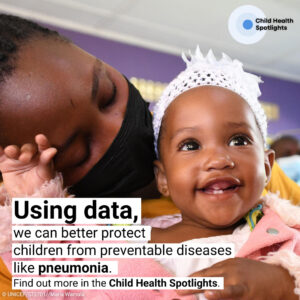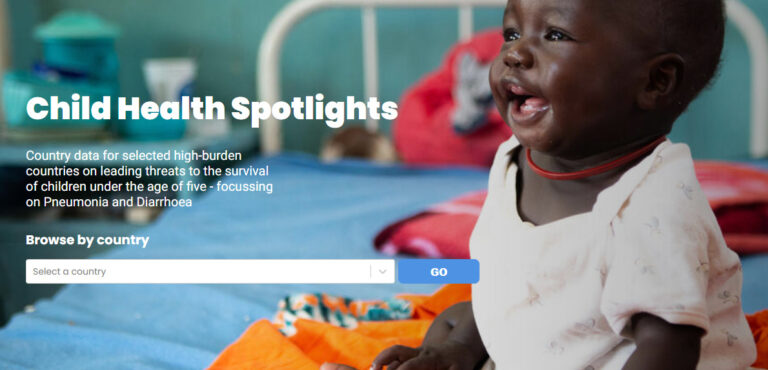On this World Pneumonia Day, we are reminded that that every 45 seconds, a child still dies from this disease – largest single infectious cause of death in children worldwide. That is more than 700,000 children under five every year.
Pneumonia, combined with diarrhoea, accounts for 23% of all deaths globally among children under the age of five. These high-burden diseases disproportionally affect poor and marginalized children, especially those living in fragile or humanitarian settings, where they face multiple deprivations and risks, including food insecurity, lack of access to good-quality health care, safe water, and sanitation. The combined effects of the COVID-19 pandemic, climate change, and increased cost of living are also impacting progress in tackling childhood pneumonia – placing millions of children at risk of infection and death, with the very young in most danger.
The good news is that almost all pneumonia deaths are preventable through vaccination, adequate nutrition, and access to handwashing and basic health services, including antibiotics and oxygen treatment at the primary healthcare level. The number of children who die from pneumonia is a direct indicator of the strength of a country’s primary healthcare system. Primary healthcare provides a comprehensive approach to deliver preventive, protective and curative care for high-burden diseases. Strengthening the three pillars of primary healthcare – integrated health services, multisectoral policy and action, and empowered people and communities – is the foundation of the global fight against pneumonia and other high-burden diseases.
We can all agree that urgent action is needed to protect, prevent, diagnose, and treat the leading causes of child deaths. But we need data to advocate for greater focus and to develop evidence and data-driven actions. Often, the necessary data is dispersed across different databases, sources and websites, making it hard for people to find the right data quickly and easily. This is where our Child Health Spotlights come in. Developed in partnership with UNICEF, our online spotlights bring together key insights on the burden of pneumonia (and diarrhoea), health financing, and child health indicators to protect, prevent, diagnose, and treat pneumonia for 15 high-burden countries. The data included in the Child Health Spotlights is drawn from a wide range of data sources, such as UNICEF, WHO and others, and will be updated regularly to incorporate the latest data points.
 High quality data is the key for evidence-driven programming and monitoring, and partnerships and advocacy. The Child Health Spotlights are a natural starting point for advocacy that keeps policymakers accountable to make better decisions that address the barriers that allow too many children to die from preventable illnesses, like pneumonia.
High quality data is the key for evidence-driven programming and monitoring, and partnerships and advocacy. The Child Health Spotlights are a natural starting point for advocacy that keeps policymakers accountable to make better decisions that address the barriers that allow too many children to die from preventable illnesses, like pneumonia.
We invite you to use the data in these online spotlights and join us on our call to governments to end preventable child deaths, and ensure equitable access to immunization, prevention and treatment of wasting, and quality primary healthcare for every child.
See here for an example of how Save the Children is working at the primary health care level in Nigeria to tackle pneumonia.
See here for our latest Progress Report on Childhood Pneumonia.
